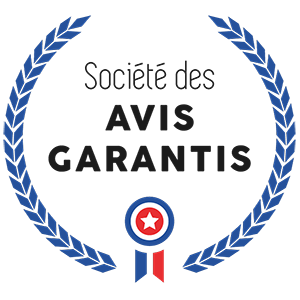A complete analysis of 3,534 school sports sections in 2,562 French schools
School sports sections are the first link in the training chain of our future Olympic and international champions. This unprecedented analysis of over 3,500 sections across the country reveals striking territorial disparities and provides a true map of French sporting excellence in the making.
Key facts:
↳ Football crushes the competition with 20.5% of sections, followed by handball (10.7%) and basketball (8.8%)
↳ Outdoor sports are exploding: rock climbing, mountain biking and canoeing on the rise
↳ Nord dominates with 32 soccer sections, ahead of Moselle and Pas-de-Calais
↳ 87% of sections are public, but with strong regional disparities
Soccer, the undisputed factory of champions
With 725 sports sections, soccer represents more than one section in five (20.5%) in France. This hegemony perfectly reflects the nation's passion for the sport, and goes some way to explaining the wealth of French talent that feeds European clubs and the French national team.
Top 10 sports in school sports sections
Number of sections by discipline - 3,534 sections analyzed
Soccer dominates with 20.5% of all sports sections
Top 5 training departments :
- North: 32 sections
- Moselle: 31 sections
- Pas-de-Calais: 29 sections
- Finistère: 28 sections
- Ille-et-Vilaine: 25 sections
This geography reveals two distinct training basins: the industrial North (Nord, Pas-de-Calais, Moselle), where popular soccer flourishes in a favorable social soil, and Brittany (Finistère, Ille-et-Vilaine), which cultivates a strong footballing tradition despite a less dense population.
Top 10 training academies
Total number of sections by academy
Lille dominates with 252 sections, or 7.1% of the national total
Team sports: the backbone of French training
Handball confirms its status as France's second-largest school sport, with 378 sections (10.7%). The dominance of Moselle (22 sections) and Grand Est is not insignificant: this region has produced a large proportion of France's world and Olympic champion teams.
Basketball (310 sections, 8.8%) is more evenly distributed, with the Rhône in the lead (22 sections), confirming Lyon as the French capital of the orange ball.
Distribution by academy of the three major sports :
- Soccer: Auvergne-Rhône-Alpes (105), Occitanie (94), Nouvelle-Aquitaine (90)
- Handball: Île-de-France (59), PACA (52), Occitanie (51)
- Basketball: Île-de-France (48), Nouvelle-Aquitaine (42), Occitanie (41)
Team vs. individual sports
Breakdown by sport category
Team sports account for 60% of sports sections
The emergence of outdoor sports as new Olympic breeding grounds
The analysis reveals a major transformation of the school sports landscape with the explosion of nature sports.Climbing (97 sections) has emerged as the sport par excellence, buoyed by its recent Olympic status and young people's enthusiasm for this spectacular discipline.
Top 5 emerging sports :
- Climbing: 97 sections (+ recent Olympic discipline)
- Badminton: 88 sections
- Judo: 83 sections
- Canoeing and kayaking: 70 sections
- Mountain biking: 57 sections
This outdoor trend bears witness to a major societal evolution: young people are embracing nature sports, which are more in tune with current environmental concerns. Mountain biking and canoeing are benefiting from this dynamic, creating new pools of champions in hitherto less-represented regions.
Rising sports
Emerging disciplines and outdoor sports
Climbing leads the outdoor sports revolution with 97 sections
Geography of excellence: the champion academies
The Lille academy dominates with 252 sections (7.1% of the national total), confirming the exceptional sporting dynamism of the Hauts-de-France region. The region regularly produces champions in numerous disciplines.
Top 10 training academies :
- Lille: 252 sections (1.15 per establishment)
- Rennes: 224 sections (1.23 per establishment)
- Versailles: 201 sections (1.16 per establishment)
- Nancy-Metz: 200 sections (1.16 per school)
- Lyon: 185 sections (1.16 per facility)
Paradoxically, some smaller académies are proving more efficient: Besançon (1.39 sections per school) and Clermont-Ferrand (1.38) are ahead of the giants of Paris and Lille in terms of density.
Data by Department
Select a metric to explore the data
Public vs. private: two training models
87.5% of sections are in the public sector, but this average masks spectacular regional disparities. The Créteil academy is 99.2% public, compared with just 59.3% for Rennes.
This difference reveals two distinct philosophies:
- The Republican model (Nord, Île-de-France): mass training in the public sector
- The Breton model: tradition of private contracting with 40.7% of sections
Public vs. private by academy
Percentage of sections in the private sector - Top 10
87.5% of sections are public, but with strong regional disparities
Elite sports: focus and excellence
Some sports show extreme geographic concentration, a sign of advanced territorial specialization:
Most concentrated sports :
- Judo: 34.9% of sections in the top 5 départements (Vosges in the lead)
- Volleyball: 27.9% (Nord dominant)
- Badminton: 27.3% (Pas-de-Calais leader)
Conversely, some sports are evenly distributed across the country:
- Rugby: present in 82 départements (17% concentration)
- Handball: 87 departments represented
- Swimming: 77 departments

The sports of the future are already underway
The analysis reveals the emergence of disciplines that may well shape the next generation of Olympians:
- Triathlon (49 sections): a growing all-round individual sport. One example is Vincent Luis, 2019 world champion, trained at Sainte-Geneviève-des-Bois (Académie de Versailles).
- Indoor football/Futsal (40 sections): a new FIFA discipline proudly represented by Kevin Ramirez, captain of the French national team, 113 caps, trained at the Clermont Foot 63 training center (Clermont-Ferrand Academy).
- Ice hockey (18 sections): an emerging sport driven by French success stories such as Damien Fleury, captain of the French team, trained entirely at the Hockey Club de Caen from the age of 4 (Académie de Normandie).
- Raid multisports (19 sections): a modern cross-discipline
Tomorrow's challenges
This mapping reveals several major challenges for the future of French sport:
- Territorial rebalancing: Paris has just 18 schools with sports sections, a critical underinvestment for the capital.
- Democratization: Some sports remain elitist, with high private participation rates (horse riding 25.6%, rowing 21.7%, golf 20.6%).
- Educational innovation: Outdoor sports require new equipment and training for teachers.
The future is written now
These 3,534 sports sections are shaping the face of tomorrow's French sport. From today's popular sports (soccer, handball) to innovation (climbing, mountain biking), from Republican massification to territorial excellence, France cultivates its sporting diversity.
The champions of Paris 2024 probably took their first steps in these establishments. Those of Los Angeles 2028 may already be training there, in a climbing section in Essonne or a mountain biking section in the Alps.
This analysis reveals a truth: France not only produces champions, it also shapes the sporting identity of its territories, section by section, department by department.













